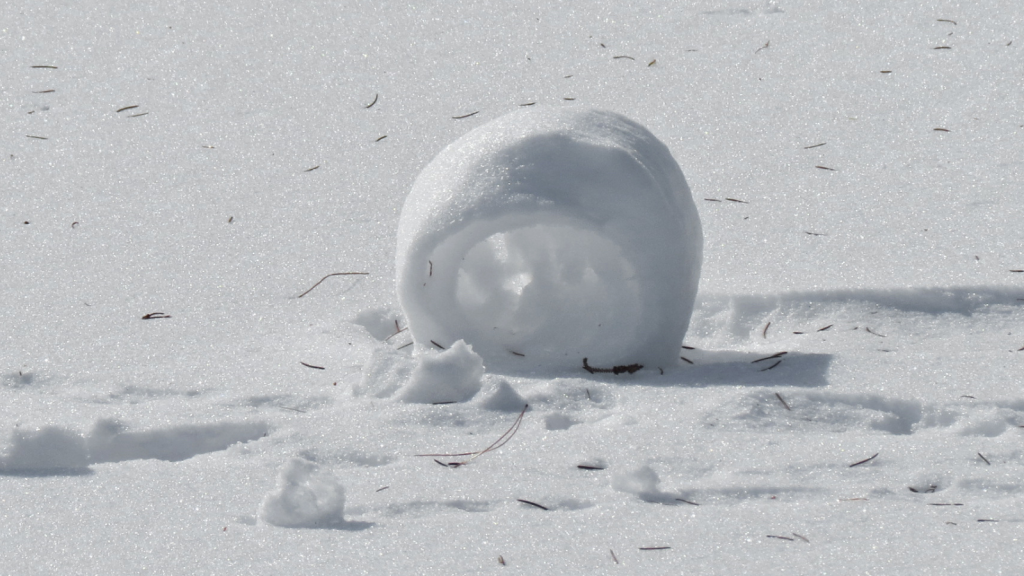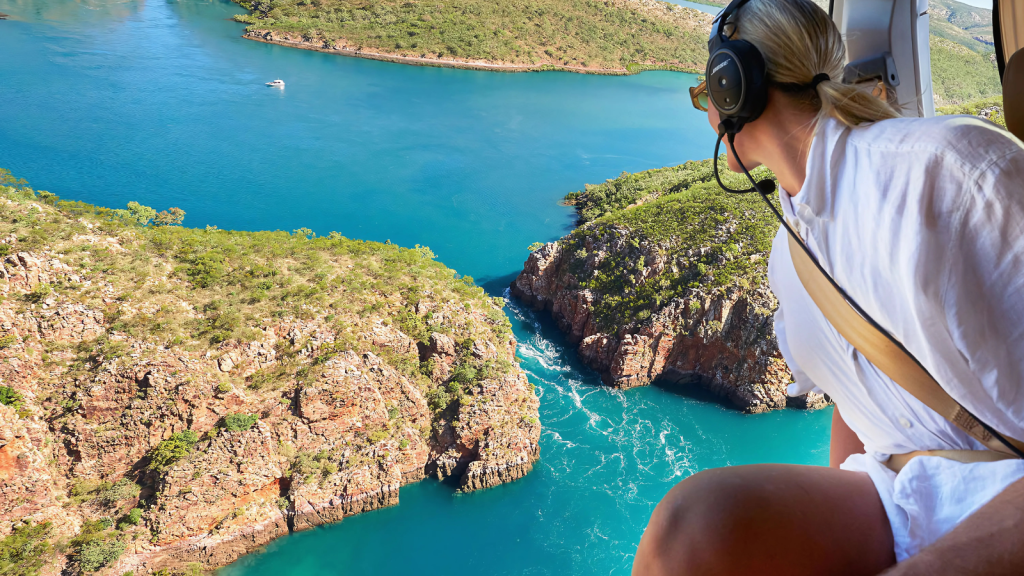Nature has a knack for surprising us with its peculiar and often mind-boggling displays. From glowing seas to rocks that seem to move on their own, our planet is brimming with phenomena that once seemed like magic. But thanks to the tireless work of scientists, many of these mysteries have been unravelled. In this list, we’ll explore 24 of the most bizarre natural occurrences that have puzzled and amazed people for centuries. We’ll delve into the fascinating scientific explanations behind these wonders, showing how even the strangest events have logical causes.
Fire Rainbows

These stunning, multicoloured clouds aren’t actually rainbows or related to fire. They’re properly called circumhorizontal arcs and occur when sunlight refracts through ice crystals in high-altitude cirrus clouds. The effect only happens when the sun is very high in the sky, making it rare in locations far from the equator. The vibrant colours are created by the same process that forms rainbows, but the flat orientation of the ice crystals causes the unique arc shape. These arcs are most commonly seen in the summer months when the sun reaches its highest point in the sky.
Mammatus Clouds

These unusual clouds resemble a cluster of bubbles hanging from the sky. They form when cold air sinks into pockets at the bottom of a cloud, creating a lumpy, pouch-like appearance. Mammatus clouds are often associated with severe thunderstorms but can also occur in fair weather. Their ominous appearance has led to many UFO reports over the years. Despite their foreboding look, mammatus clouds typically signal that the worst of a storm has passed.
Blood Falls

In Antarctica, a bright red waterfall pours out of the Taylor Glacier, looking like a gaping wound in the ice. The striking colour comes from iron-rich saltwater that oxidises when it contacts air. This brine has been trapped under the glacier for millions of years, hosting unique microbial life that thrives in the dark, cold, and oxygen-poor environment. The discovery of this extreme ecosystem has implications for the search for life on other planets with similar conditions.
Sailing Stones

In Death Valley, California, rocks seem to move across the desert floor on their own, leaving long trails behind them. The mystery was solved in 2014 when researchers caught the movement on camera. It happens when a thin layer of ice forms beneath the rocks, allowing them to glide across the muddy surface pushed by light winds. This phenomenon only occurs every few years when the precise weather conditions align.
Bioluminescent Waves

Some beaches around the world glow blue at night when waves crash on the shore. This ethereal light is produced by tiny marine organisms called dinoflagellates. When agitated by the motion of the waves, they emit a brief flash of blue light, likely as a defence mechanism. This natural light show is more common in warm, tropical waters. The intensity of the glow can be affected by factors such as water temperature, nutrient availability, and the presence of predators.
Fire Whirls

Also known as fire tornadoes, these spinning vortexes of flame can occur during wildfires or volcanic eruptions. They form when intense heat and turbulent wind conditions combine to whip flames into a twisting spiral. Fire whirls can be extremely dangerous, reaching heights of over 100 metres and temperatures of 1,000°C. Firefighters have developed special tactics to combat these phenomena, as they can quickly spread fires over large areas.
Frost Flowers

These delicate ice structures form on thin sea ice in polar regions. They occur when the air is much colder than the ice, causing water vapour to skip the liquid phase and go straight to forming ice crystals. Frost flowers can concentrate chemicals from the sea ice, playing a role in polar atmospheric chemistry. These formations are crucial for studying the exchange of gases between the ocean and atmosphere in polar regions.
Penitentes

In high-altitude regions of the Andes, fields of tall, thin ice spikes called penitentes can form. They’re created by uneven melting and sublimation of snow. Areas that melt slower form the peaks, while surrounding areas sublimate faster, deepening the troughs between spikes. These ice formations can grow several metres tall. The presence of penitentes can significantly affect the energy balance of glaciers and snowfields, influencing local climate patterns.
Lenticular Clouds

These lens-shaped clouds often form near mountains and are frequently mistaken for UFOs. They occur when moist air flows over a mountain, creating a series of standing waves on the downwind side. If the temperature at the crest of these waves drops to the dew point, a lenticular cloud forms. Pilots of small aircraft typically avoid flying near these clouds due to the strong turbulence associated with them.
Ball Lightning

This rare form of lightning appears as glowing, electric orbs that float in the air for several seconds. While once considered a myth, it has now been recorded on film. Scientists believe it might be caused by vaporised silicon from soil, forming a glowing ball of gas when struck by lightning. Recent laboratory experiments have successfully created ball lightning-like phenomena, bringing us closer to understanding this elusive occurrence.
Green Flash

Just as the sun dips below the horizon, a brief flash of green light sometimes appears. This optical phenomenon occurs because the atmosphere refracts different colours of sunlight at slightly different angles. The green is usually the last colour visible as the sun sets, appearing for just a second or two. Similar effects can sometimes be seen with the moon or bright planets like Venus.
Brinicles

Underwater icicles form when super-cold brine leaks from sea ice. As this brine sinks, it freezes the less salty water around it, creating a hollow tube of ice that grows towards the seafloor. These “icicles of death” can freeze sea creatures in their path. Brinicles play a role in the circulation of cold, dense water in polar oceans, contributing to global ocean currents.
Red Sprites

These large-scale electrical discharges occur high above thunderstorm clouds. They appear as reddish-orange flashes, often in the shape of jellyfish or columns. Sprites are caused by powerful positive lightning strikes between the ground and thunderclouds. They occur in the mesosphere, reaching altitudes of up to 90 kilometres, and can influence the chemistry of Earth’s upper atmosphere.
Volcanic Lightning

During some volcanic eruptions, the ash plume becomes illuminated by spectacular lightning displays. This occurs when ash particles collide and generate static electricity. The intensity of the lightning can provide information about the size of ash particles in the eruption. Volcanic lightning can pose additional hazards during eruptions, potentially interfering with communications and aircraft operations.
Snow Rollers

These rare cylindrical snow formations occur when wind blows a chunk of snow along the ground, picking up more snow along the way. They require a precise combination of snow, wind, moisture, and temperature. Snow rollers can range from the size of a tennis ball to a car. Unlike snowballs made by humans, snow rollers are often hollow or have a small core of snow.
Fallstreak Holes

Also known as punch hole clouds, these circular gaps sometimes appear in clouds. They form when parts of the cloud drop below freezing, but the water droplets don’t freeze until ice particles are introduced. Aircraft passing through the cloud layer can trigger this phenomenon. The falling ice crystals that create the hole can sometimes create a rainbow-like effect called a circumhorizon arc.
Dirty Thunderstorms

Some volcanic eruptions produce lightning within the ash plume, creating a spectacular display known as a dirty thunderstorm. The lightning is generated by the collision of ash particles, much like how ice particles collide to create lightning in regular thunderstorms. Studying dirty thunderstorms helps scientists better understand the dynamics of volcanic plumes and improve eruption forecasting.
Moonbows

These rare nighttime rainbows are caused by moonlight rather than sunlight. They require a bright full moon, rain falling opposite the moon, and dark skies. Moonbows often appear white to the human eye due to low light conditions, but long-exposure photographs can reveal their colours. They can also form around waterfalls or in sea spray, where they’re sometimes called lunar spraybows.
Light Pillars

Vertical beams of light appear to extend above and below bright light sources. They’re optical illusions caused by the reflection of light from ice crystals suspended in the air. Light pillars are most commonly seen in cold climates where ice crystals readily form in the atmosphere. They can appear in various colours depending on the light source, with natural light pillars forming from moonlight or sunlight.
Morning Glory Clouds

Long, tube-shaped clouds that can stretch for hundreds of kilometres sometimes form over northern Australia. These rare clouds are a type of solitary wave called an atmospheric internal wave. They’re formed by the interaction between sea breezes and morning temperature inversion. Glider pilots sometimes “surf” these clouds, using the associated updrafts to travel long distances.
Square Waves

Off the Isle of Rhe in France, a rare and dangerous ocean phenomenon creates a checkerboard pattern on the sea surface. This occurs when two wave systems cross at right angles, creating a grid-like appearance. Square waves can be extremely hazardous to ships and swimmers. The phenomenon can create powerful rip currents that are difficult to escape, making it crucial for beach-goers to be aware of this danger.
Catatumbo Lightning

In Venezuela, a persistent thunderstorm occurs at the mouth of the Catatumbo River for 140 to 160 nights a year, 10 hours per day. This phenomenon is caused by a unique combination of topography and wind patterns that consistently create the perfect conditions for thunderstorms. The Catatumbo lightning produces ozone and other compounds that play a role in repairing the ozone layer.
Asperitas Clouds

These dramatic, wave-like clouds were only officially recognised as a distinct cloud formation in 2017. They’re formed by wind shear between different layers of the atmosphere, creating an undulating, turbulent-looking cloud base. Despite their ominous appearance, they rarely produce stormy weather. Asperitas clouds are often associated with the decaying phase of thunderstorms but can also occur in calmer conditions.
Horizontal Waterfalls

In the Kimberley region of Western Australia, tidal movements create the illusion of horizontal waterfalls. Massive tidal shifts force water through narrow coastal gorges, creating a rushing waterfall effect sideways. The direction of the “fall” reverses with each change of tide. These horizontal falls can create water level differences of up to 4 metres between the ocean side and the inland side of the gorges.
From Sunrise to Sunset: 19 Incredible Facts About the Sun That Will Light Up Your Universe

Our sun, an immense sphere of burning gas, and the centerpiece of our solar system, influences every aspect of life on Earth. But despite its everyday presence, many of us know little about its complexities and the pivotal role it plays.
Read More: From Sunrise to Sunset: 19 Incredible Facts About the Sun That Will Light Up Your Universe
Think You’ve Heard It All? 22 Flat Earth Beliefs That Will Astonish You

Flat Earthers are a passionate bunch, dedicating a considerable amount of resources to support their unconventional views. Interestingly, a significant number of Flat Earthers intertwine their scientific convictions with deep religious beliefs, which might shed light on some of their more peculiar theories. I’m not here to make fun of the Flat Earth folks, but instead to explore some of their theories and the reasons behind their beliefs.
Read More: Think You’ve Heard It All? 22 Flat Earth Beliefs That Will Astonish You
Katy Willis is a writer, master herbalist, master gardener, and certified canine nutritionist who has been writing since 2002. She’s finds joy in learning new and interesting things, and finds history, science, and nature endlessly fascinating.
